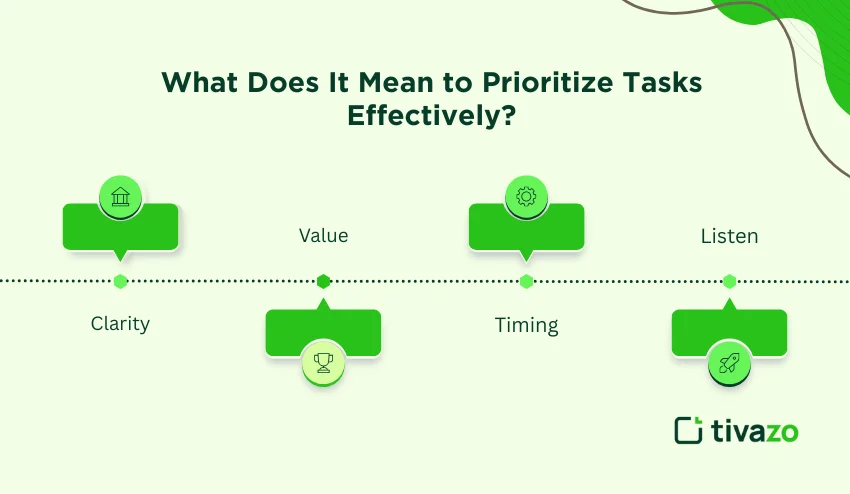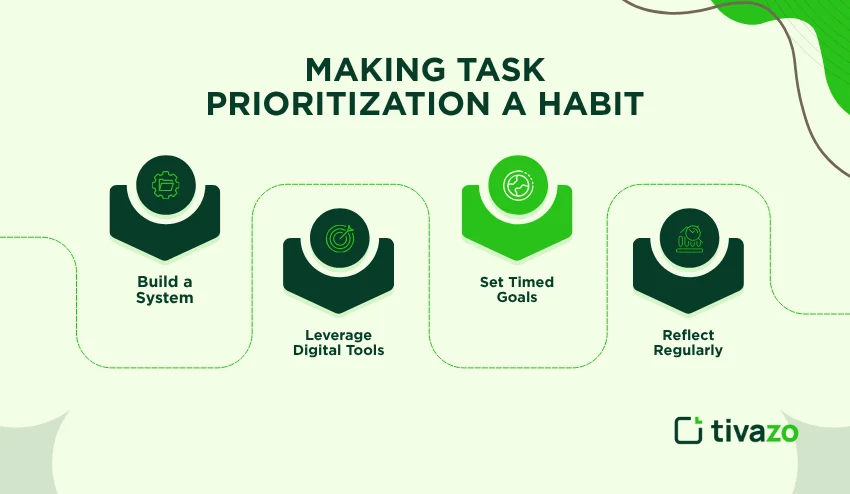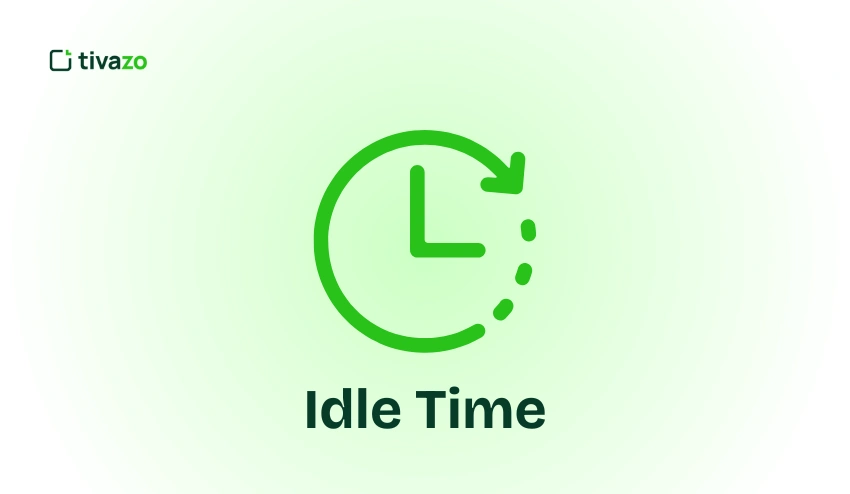In the quick-moving work environment of today, being able to prioritize is the difference between productivity and burnout. It’s not enough just to do things; it’s about doing the right things. Whether you’re managing a project, leading a team, or mentally organizing your daily to-dos, the techniques of mastering the art of prioritization enable you to focus on impactful work that moves you closer to your goals.
This blog will walk you through the proven approaches, examples in practice, and steps to take so that you will be able to master the art of prioritization and make better decisions at work.
What Does It Mean to Prioritize Tasks Effectively?
Prioritizing tasks means recognizing which tasks provide the highest value and doing those first. It means balancing urgency and importance and ensuring tasks are in alignment with business or personal goals.

The Fundamental Principles on Art of Prioritization Tasks
- Clarity: You know clearly what you target.
- Value: You focus on the things that produce the biggest benefit.
- Timing: You do things when they produce the most overall value.
- Listen: Your priorities may change as you get new information.
| Priority Level | Task Type | Example |
| High | Urgent and important | Fixing a critical system bug |
| Medium | Important but not urgent | Strategic planning meeting |
| Low | Urgent but less important | Responding to minor emails |
Once you understand these levels, you have the skill on the art of prioritization down.
How to Prioritize Tasks Efficiently
1. Clarify Your Objectives First
The initial stage of prioritizing is clarifying your short- and long-term objectives. Without clarity, on the prioritizing process gets muddied. Once you understand what you care about, discerning the critical few from the distractions becomes simple.
2. Utilize the Eisenhower Matrix
The Eisenhower method separates tasks into four categories by urgency and importance:
- Do First: Tasks that are urgent and important.
- Schedule: Important but not urgent tasks.
- Delegate: Urgent but not as critical tasks.
- Eliminate: Tasks that are neither urgent nor important.
The Eisenhower matrix allows for simplification on the art of prioritization of tasks and even lets you visualize which tasks are worthy of your time and focus first.
3. Use the 80/20 Rule (Pareto Principle)
According to the Pareto Principle (the 80/20 Principle), eighty percent (80%) of results come from twenty percent (20%) of what you do. The art of prioritization lies in determining which 20% of the actions drive results.
4. Task Scoring Using Effort vs. Impact Matrix
To improve your art of prioritization, score each task based on its effort and impact:
| Effort | Impact | Task Type | Example |
| Low | High | Quick Wins | Automating a repetitive process |
| High | High | Major Projects | Launching a new product feature |
| Low | Low | Fill-ins | Cleaning up email folders |
| High | Low | Time Wasters | Over-analyzing minor tasks |
Emphasize Quick Wins. These tasks let you make the biggest impact with the least time.

The Art of Prioritizing at Work
The art of prioritizing at work is essential to meeting deadlines, managing stress, and working well as a team.
Best Practices for Mastering the art of Prioritization at Work:
- Establish clear deadlines: This can help bring awareness and alignment to your task priorities in line with your timelines.
- Group tasks of a similar type: This limits the amount of switching between tasks, which will give you improved focus in your work.
- Share your priorities: Inform your team of what your high-value work is
- Reflect on your daily progress: Assess your prioritized work, and adjust from the context of what work happens to be urgent at that time.
Ingraining the art of prioritizing will help you feel proactive versus reactive at work. Learn to decline low-value tasks and focus your week on tasks that further achieve your goals. With consistent practice, this will build not only your decision-making and accountability but also your value to the team as a person who creates and maintains distant work.
Making Task Prioritization a Habit
Once we build consistency, the whole purpose of the art of prioritization is brought to life.
1. Build a System
Implement a review process daily or weekly, and continuously ask yourself, “What are my priorities?” Block out time for straightforward, deep work where you can be alone in your thoughts. Make this routine consistent and also just as much a part of your pre-work routine.
2. Leverage Digital Tools
Programs like Asana, Trello, or Notion can organize and visualize your tasks, but can keep you from just losing track of where the goalposts are, and even track progress, set reminders, and allow a tactile organizational style.
3. Set Timed Goals
Stop the cycle of perfectionism. Each task has its constraints, so then, each task should have its own degree of occupational time constraint; in fact, each task should have its own area of time. The earlier we begin to pay attention to the next item, and eventually move on, the more productive we will consider ourselves. Plus, this helps to focus the mind at work and detach from wasting unnecessary time overanalyzing its most insignificant details.
4. Reflect Regularly
Spend some time analyzing the positives and the negatives of why you prioritized what you have, and how it improves your productivity. The next follow-up you will need to always take time each week, at the same location, each week, bigger picture fun, tone-setting experiences, where you celebrate success, and gaps for improvement; technically yours, simply measurable in progress. This process will create the habit, practice, and general use of task on the art of prioritization to create more productivity and an overall better work-life balance.

Examples of Task Switching at Work
Task switching or “multi-tasking” happens when several unfinished tasks or issues are competing for your attention all at once. Task switching decreases your ability to concentrate and be productive. It can lead to mental exhaustion, possibly mistakes, and waste time as your brain is required to recalibrate to the new context on an ongoing and/or repeated basis.
A few typical examples might include
- Replying to emails when you should be engaged in a meeting.
- Writing a report while simultaneously following a chat amongst team members.
- Starting a new project before finishing the last one.
- Checking notifications while you are working on a deep work session.
Here are some ways to eliminate task switching:
- Silence your notifications when working deeply.
- Set aside dedicated time blocks to do similar types of activities.
- Use single-tasking to practice and reinforce how to make the most of art of prioritization.
- Find time to take breaks to help sustain your focus.
Effective Delegation of Tasks
Delegation is an important aspect of the skill of on the art of prioritization. It allows you to assign tasks to people based on their skills and availability.
- Steps to Follow When Delegating Tasks
- Assign people based on what they know.
- Clarify what you are expecting and the deadlines.
- Give them the resources to be successful.
- Check in regularly to assess progress, but don’t micromanage.
- Provide feedback to help team members grow.
- Delegating tasks is not about giving up control; it’s about getting the best productivity from the entire team.
Effort vs. Impact Matrix: Scoring Work with Clarity and Accuracy

Step 1: Write Everything Down
Write down every conceivable action item you have to do.
Step 2: Score by Impact
Rate the amount of impact towards your goals the task provides (1–5)
Step 3: Score by Effort
Evaluate the level of time or effort it will take (1-5).
Step 4: Identify your Quick Wins
The high-impact, low-effort tasks are “Quick Wins,” meaning you want to do this right away.
| Category | Description | Action |
| Quick Wins | High impact, low effort | Meaning “do now! |
| Major Projects | High impact, high effort | Plan the work |
| Fill-ins | Low impact, low effort | Plan to do later |
| Time Wasters | Low impact, high effort | Stop doing this! |
This simple scoring method provides clarity and structure to the art of prioritization so that you can work smarter instead of harder.
The Practice The Art Of Prioritization: A Summary of Steps
| Step | Action | Result |
| 1 | Identify goals | Clear sense of direction |
| 2 | Categorization of tasks | Engagement in value-centric work |
| 3 | Matrix tool | Visualize and assess priorities |
| 4 | Delegate effectively | So the team is productive |
| 5 | Build habits | Stay efficient over time |
The art of Prioritization, if practiced consistently, will fundamentally change your approach to work, alleviate stress, and improve performance.
Conclusion
The art of Prioritization is more than just making lists; it’s a practice that continues to shape your mentality about the relative importance and urgency of everything on your to-do list. When you implement the practice of prioritizing as a regular habit, you train yourself to engage with high-value efforts, resist distractions, and avoid burnout. This will put you in a place of being more proactive about making choices and responding to less immediate needs. It helps teams communicate efficiently, as every team member understands what needs to be addressed now and what can wait.
In time, prioritizing becomes a habitual practice, shaping our workflow toward district efficiency and ultimately less stress. Prioritizing leads to personal success, organizational success, and maintaining work-life balance!




